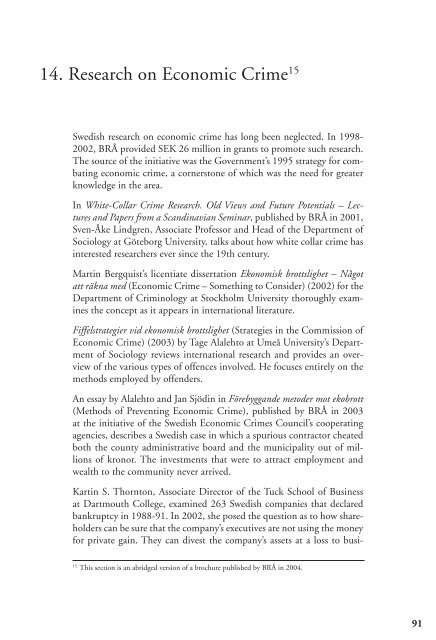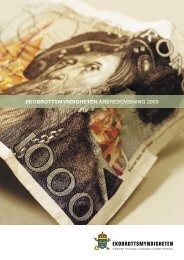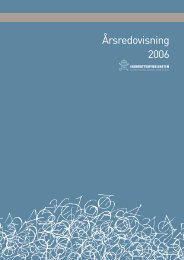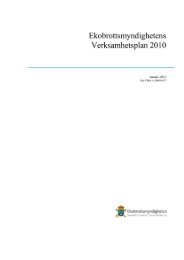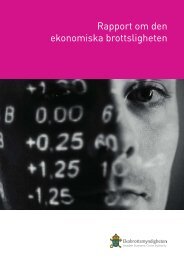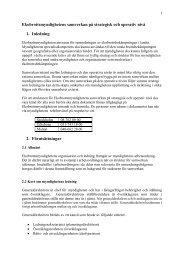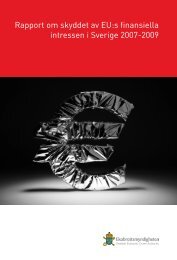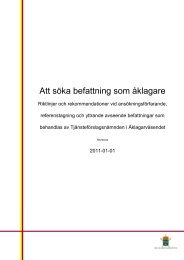Economic crime report 2004 - Ekobrottsmyndigheten
Economic crime report 2004 - Ekobrottsmyndigheten
Economic crime report 2004 - Ekobrottsmyndigheten
Create successful ePaper yourself
Turn your PDF publications into a flip-book with our unique Google optimized e-Paper software.
14. Research on <strong>Economic</strong> Crime 15<br />
Swedish research on economic <strong>crime</strong> has long been neglected. In 1998-<br />
2002, BRÅ provided SEK 26 million in grants to promote such research.<br />
The source of the initiative was the Government’s 1995 strategy for combating<br />
economic <strong>crime</strong>, a cornerstone of which was the need for greater<br />
knowledge in the area.<br />
In White-Collar Crime Research. Old Views and Future Potentials – Lectures<br />
and Papers from a Scandinavian Seminar, published by BRÅ in 2001,<br />
Sven-Åke Lindgren, Associate Professor and Head of the Department of<br />
Sociology at Göteborg University, talks about how white collar <strong>crime</strong> has<br />
interested researchers ever since the 19th century.<br />
Martin Bergquist’s licentiate dissertation Ekonomisk brottslighet – Något<br />
att räkna med (<strong>Economic</strong> Crime – Something to Consider) (2002) for the<br />
Department of Criminology at Stockholm University thoroughly examines<br />
the concept as it appears in international literature.<br />
Fiffelstrategier vid ekonomisk brottslighet (Strategies in the Commission of<br />
<strong>Economic</strong> Crime) (2003) by Tage Alalehto at Umeå University’s Department<br />
of Sociology reviews international research and provides an overview<br />
of the various types of offences involved. He focuses entirely on the<br />
methods employed by offenders.<br />
An essay by Alalehto and Jan Sjödin in Förebyggande metoder mot ekobrott<br />
(Methods of Preventing <strong>Economic</strong> Crime), published by BRÅ in 2003<br />
at the initiative of the Swedish <strong>Economic</strong> Crimes Council’s cooperating<br />
agencies, describes a Swedish case in which a spurious contractor cheated<br />
both the county administrative board and the municipality out of millions<br />
of kronor. The investments that were to attract employment and<br />
wealth to the community never arrived.<br />
Kartin S. Thornton, Associate Director of the Tuck School of Business<br />
at Dartmouth College, examined 263 Swedish companies that declared<br />
bankruptcy in 1988-91. In 2002, she posed the question as to how shareholders<br />
can be sure that the company’s executives are not using the money<br />
for private gain. They can divest the company’s assets at a loss to busi-<br />
15.<br />
This section is an abridged version of a brochure published by BRÅ in <strong>2004</strong>.<br />
91


